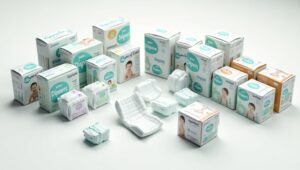When to Bathe a Newborn Baby? A Complete Guide for New Parents
Welcoming a newborn into your life is a beautiful and transformative experience. Along with the overwhelming love and joy comes a long list of responsibilities and questions — one of the most common being: When is the right time to bathe a newborn baby?
Bathing a baby seems like a simple task, but for new parents, it can feel intimidating. Too soon, and you might risk irritation or illness. Too late, and you might worry about hygiene. In this guide, we’ll walk you through everything you need to know — from the ideal timing of the first bath to building a safe, soothing bath routine.
The Golden Rule: Delay the First Bath
In the past, hospitals often bathed newborns within hours of delivery. However, modern recommendations suggest waiting at least 24 to 48 hours after birth before giving your baby their first bath. Why?
Here are a few reasons:
1. Preserving the Vernix
Newborns are born with a white, waxy substance called vernix caseosa. It acts as a protective layer on their skin, rich in antimicrobial properties and moisture. Washing it off too soon strips the baby of these natural defenses.
2. Preventing Hypothermia
Newborns struggle to regulate body temperature. Bathing them too early can cause a sudden drop in body heat, increasing the risk of hypothermia. Delaying the first bath helps them adjust to the outside world and maintain warmth.
3. Encouraging Bonding and Breastfeeding
Skin-to-skin contact immediately after birth supports maternal bonding and successful breastfeeding. Postponing the bath allows more time for this crucial bonding period.
Sponge Baths: The First Few Weeks
Until the baby’s umbilical cord stump falls off — usually within the first 10 to 14 days — it’s recommended to stick with sponge baths.
How to Give a Sponge Bath:
- Gather your supplies: Use a soft cloth, warm water (around 37°C or 98.6°F), mild baby soap (optional), and a clean towel.
- Choose a warm, draft-free room: Newborns are sensitive to cold. Make sure the room is comfortably warm before undressing your baby.
- Lay your baby on a soft towel or changing pad: Support their head and neck at all times.
- Clean gently: Use the damp cloth to clean the face, neck folds, underarms, hands, legs, and diaper area. Avoid soaking the umbilical stump.
- Dry immediately: Pat the skin dry gently and dress your baby warmly.
Sponge baths every 2 to 3 days are more than sufficient. Overbathing can lead to dry or irritated skin in these early weeks.
When Can You Start Tub Baths?
Once the umbilical cord stump falls off and the belly button area has healed, you can start giving your baby tub baths.
This milestone usually occurs around two weeks after birth.
Tub Bath Tips for Newborns:
- Use a small baby bathtub or a clean sink lined with a soft towel.
- Fill it with just 2-3 inches of warm water.
- Always check the water temperature with your elbow or a baby thermometer.
- Hold your baby securely, supporting their head and neck with one hand.
- Use your other hand to gently pour water and wash with a soft cloth.
- Shampooing the baby’s hair is optional and only needed once a week.
Always keep a firm hold — wet babies are slippery. Never leave your baby unattended, not even for a second.
How Often Should You Bathe a Newborn?
One of the biggest misconceptions is that babies need daily baths. In reality, 2-3 baths per week is sufficient during the first few months. Daily bathing can dry out the baby’s sensitive skin and strip away natural oils.
Factors That Might Require Extra Baths:
- Excessive sweating (common in warm climates)
- Spit-up accidents
- Diaper blowouts
- Exposure to allergens or pollutants
However, even in these cases, gentle cleaning of specific areas (face, neck, and diaper zone) is usually enough.
Morning vs. Evening: What’s the Best Time to Bathe?
There’s no universal best time. It depends on your baby’s routine and your family’s schedule. Here are some pros and cons of both:
Morning Baths
Pros:
- Baby is alert and more active
- Natural sunlight can help warm the room
- Good way to start the day fresh
Cons:
- May clash with feeding or nap time
- Not ideal if mornings are busy
Evening Baths
Pros:
- Helps calm the baby before bedtime
- Encourages better sleep routines
- Great bonding time for parents after work
Cons:
- Baby may be more tired or fussy
- Cold temperatures at night might be uncomfortable
Ultimately, consistency matters more than timing. Choose a time that suits your baby’s temperament and your availability.
Skin Care After Bathing
Once the bath is done, proper aftercare keeps your baby’s skin healthy and hydrated.
Post-Bath Routine:
- Dry quickly but gently with a soft towel.
- Apply baby lotion or moisturizer if your baby has dry skin.
- Dress in soft, breathable clothes — preferably cotton.
- Clean and dry the diaper area well to prevent rashes.
Signs Your Baby Might Need a Bath
While a full bath isn’t necessary daily, you should clean your baby if:
- They smell sour or sweaty
- There is visible dirt or spit-up
- The diaper leaks beyond the usual area
- Their hair is oily or scalp appears flaky
Quick spot cleaning or sponge baths are sufficient in these cases.
Cultural and Traditional Considerations
Many cultures have their own beliefs and practices about newborn bathing. In some traditions, babies are bathed as early as a few hours after birth, often with herbal mixtures or oils. In others, babies are not bathed for several days or are massaged with oil before bathing.
If you’re following cultural practices, keep these in mind:
- Always consult your pediatrician before using any herbal or oil-based products.
- Make sure water temperature is safe and the environment is clean.
- Ensure the baby’s body is fully supported at all times.
Blending cultural traditions with modern safety recommendations can offer a balanced approach that respects heritage and health.
Common Bathing Mistakes to Avoid
Even the most well-meaning parents can make mistakes during newborn baths. Here are some to avoid:
- Using hot water – Always test the water with your elbow.
- Leaving the baby unattended – Stay within arm’s reach at all times.
- Overbathing – 2 to 3 times a week is enough for healthy skin.
- Using strong soaps – Stick to gentle, fragrance-free products.
- Rubbing too hard – Always dab and pat, never scrub.
- Bathing when sick or cold – Delay baths if your baby shows signs of illness or cold stress.
Creating a Calm Bathing Experience
Bath time should be a soothing, bonding moment for both parent and baby. Here’s how to make it enjoyable:
- Talk or sing softly while bathing.
- Use gentle strokes and keep eye contact.
- Have everything ready before starting (towel, clothes, diaper).
- Warm the room to avoid chills.
- Keep the bath short — 5 to 10 minutes is enough.
Conclusion: Trust Your Instincts
Bathing a newborn is not just about cleanliness — it’s a tender ritual that builds trust and comfort. The key is to stay informed, observe your baby’s cues, and develop a rhythm that works for your family.
Remember, each baby is different. What matters most is safety, gentleness, and love. Don’t worry if the first few baths feel awkward. With time and practice, you’ll find your flow — and so will your baby.







